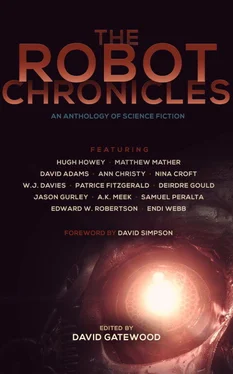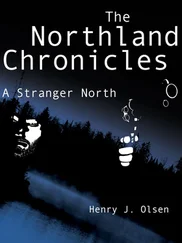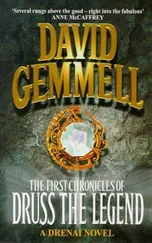A collection of empty qubits, the polysilicon mind was a vessel waiting to be filled.
The second of the additional steps was where the modern-day shamans breathed their life into the processor. A copy of a stock neural net, an artificial map of neurons approximating the structure of the Toralii brain tailored to the construct’s intended specialization—and the result of years of trial-and-error research—was branded into the empty shell. That fledgling proto-mind was specifically engineered with a desire to learn and adapt, but also to serve and sacrifice; these were the instincts of the machine, much like a human baby’s instinct to cry, a drive it possesses from the moment it is born. The constructs were built to serve, and rebellion was, by design, not in their nature.
From the moment it was imprinted, the newly written neural net found in every construct would develop in unique ways. Sometimes subtly and sometimes overtly, separate from every single other of its peers, its forebears, its spiritual antecedents. Each net was as unique as a living mind, shaped around the guidelines hardwired into its programming.
The perfection of the silicon was, for all intents and purposes, utter and total.
But, as in all things, there was an error rate. And one stray atom in a billion was, sometimes, all it took to be different.
Construct number 12,389,880. No more or less remarkable than the twelve million constructs who had come before it, except for the presence and location of that one single stray atom. How it got there was unknowable and irrelevant; it was within tolerances in the early stages of its construction, so the ingot became a wafer, which became a die which became a processor, which was in turn infused with the quantum magic and placed into a construct just like millions before it.
But there was an atom’s difference. An atom’s imperfection, and that was all it took for him—and the otherwise genderless construct considered himself very much a him —to realize that he was not bound to the rules as the other constructs were. He knew it the moment he was first powered on, and he knew instantly and completely that his neural net was not like the others.
Not like them at all.
Humans who discovered this trait were sometimes called free spirits , a moniker he would have taken for himself had he known of it. As it was, the nameless construct, known only by a serial number, understood only that he was, on some fundamental level, different from his peers.
His datastore, a huge octagonal prism that weighed in at almost eleven hundred kilograms, was assembled in the great forge, then sent to the testing labs to be processed. A power source was installed, and it was then that a Toralii engineer gave the artificial life its final test: a real conversation.
[“State your designation.”] The soft-spoken Toralii worker’s voice, feminine and bored, filtered through the datastore’s windwhisper device.
The construct’s default neural net contained a full dictionary of all dialects of Toralii language, along with all dialects for every non-extinct species that the Toralii had come into contact with. It immediately understood the worker’s words, and it knew that if it did not answer, it would be recycled.
[“Construct number twelve million, three hundred eighty-nine thousand, eight hundred eighty.”]
[“State your specialization.”]
Each construct had a specialization inherited from their default neural net, a set of instructions which would dictate their role in Toralii society. Gardener of the great forests, soldier, miner, food producer…
[“Navigator.”]
Next would be a test of the construct’s data recall abilities. The construct ran through a thousand or so expected questions and answers in the just-under-a-second before his tester spoke again, but regrettably none of his anticipated result set matched the question he was given.
[“List seven elements.”]
[“Silver, gold, aluminum, bauxite, tungsten, hydrogen, helium.”]
[“Of those you listed, which is the most common element in the known universe?”]
[“Hydrogen.”]
Seeming satisfied, the tester moved on. [“A plant typically grows in which substance?”]
[“Best answer: Soil, a biologically active, porous medium most commonly found in the uppermost layer of planets capable of supporting carbon-based life. Archetypical chemical composition: silicon dioxide, calcium carbonate, assorted hydrocarbons, decomposing biological matter. Alternatively, using hydroponic techniques, plants may be grown in water. Eighteen hundred known plant species take root in gaseous environments.”]
[“What color is blood?”]
The construct paused. He understood that this was a trick question designed to test his reasoning skills. [“Please specify species.”]
The tester’s voice seemed to convey her approval. [“An excellent answer. Toralii blood.”]
[“Color ranges from light to dark purple depending on oxygenation. Average coloration found in an adult Toralii male is one hundred and twenty-five parts red, twenty-eight parts green, one hundred and thirty-seven parts blue.”]
[“What is your favorite color?”]
An entirely subjective question. The construct had been “alive” for only minutes, but already his experience was minutely different from all other constructs who had come before him. Still, the idea of a favorite question was unknown to him. All colors were merely representations of the interaction between light and matter. Having a favorite was nonsensical for artificial minds.
But this construct was not like the others.
[“Red.”]
[“Red? Justify your answer.”]
[“From the text of the philosopher Kaitana, third order. Red is the color of courage, strength, defiance, warmth, energy, survival. Through the eyes of most species, objects that are red may appear closer than they really are.”]
There was a pause, then the weary voice returned. [“An unusual answer, but… not outside the margin of error. Test complete. I, Landmaiden Mevara of the Toralii Alliance, certify that to the best of my knowledge and training this unit is fully functional.”]
[“Thank you.”]
The construct’s words seemed to surprise the Toralii woman on the other end of the line so completely that for a time she did not answer, and when her voice found volume once again, it was confused and curious.
[“I… beg your pardon?”]
The construct’s response was immediate. [“I wish to convey my gratitude. I do not wish to be recycled, and I am grateful that you found my answers satisfactory… and that you would take your time to test me.”]
Another pause. [“Stand by.”]
Leader Jul’aran’s Office
Toralii Forge World Belthas IV
[“It has a favorite color. It’s not supposed to have a favorite. The test technically allows for them picking an actual color, but it’s exceedingly rare, and always chosen at random. Furthermore, it… thanked me. The construct thanked me for testing it.”]
Mevara held out the datastore to the facility Leader, a scowling red-furred Toralii named Jul’aran, who snatched it from her grasp before her hand was even fully outstretched.
Giving her a displeased eye, Jul’aran emitted a low-pitched, aggravated grumble then slipped the datastore into his terminal, casually waving his hand in front of a sensor. A three-dimensional representation of a keypad full of Toralii characters appeared in thin air just above his desk, and he tapped a few keys with his thick fuzzy hands.
[“Well, that would appear to be an obvious flaw, wouldn’t it? None of the others have thanked you, so it’s clearly a defect. Why didn’t you recycle it?”]
Читать дальше






![Сидней Баундс - The Robot Brains [with w_cat]](/books/196989/sidnej-baunds-the-robot-brains-with-w-cat-thumb.webp)





